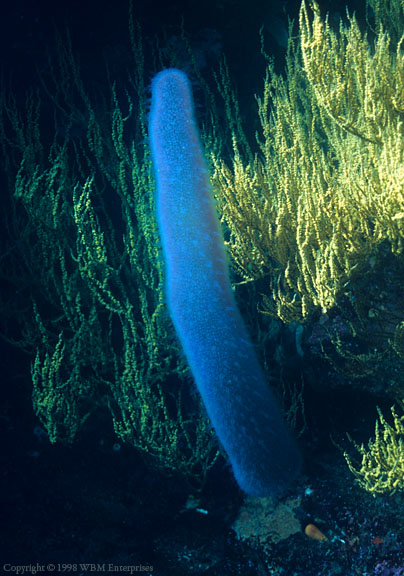 |
||||
|
|
|
An unidentified colonial invertebrate and yellow Black Coral. Isla Champion, Islas Galápagos, Ecuador Depth 100 feet or 30 meters |
|
|
 |
||||
|
|
|
An unidentified colonial invertebrate and yellow Black Coral. Isla Champion, Islas Galápagos, Ecuador Depth 100 feet or 30 meters |
|
|
![]()
![]()
|
* Large colonial invertebrates such as the above (about 50 centimeters in length) were nowhere common, but when found were consistently within large volumes of clear, very cold water. These cells, we assumed, were driven up from regions of considerable depth. The large 'bubbles' were noticeably clearer than the surrounding waters, and in some instances we could see a clear line of demarcation between these 'bubbles' and the surrounding water. As the buoyancy of a volume of water decreases with increasing temperature, we guessed that not buoyancy, but some vertical current must have driven these cold cells, and their inhabitants, from a deeper marine environment . The purple-blue colonial organism were covered with cilia. Such may function in the feeding process, but would seem very weak as propulsive mechanisms. We have been unable to even make a preliminary guess as to identification. The golden yellow branching organism conspicuous in the background is the omnipresent Galápagos Black Coral (Antipathes galapagensis). Isla Champion, Islas Galápagos, Ecuador - Depth 100 feet or 30 meters |